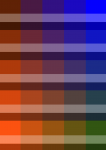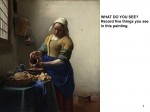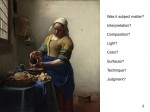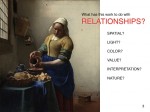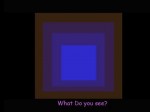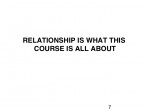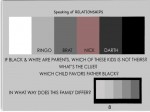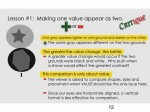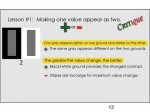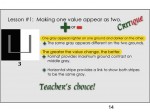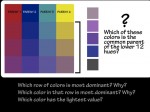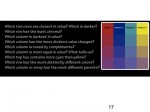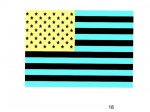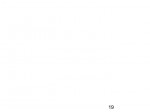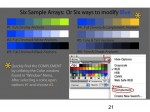Homework assignment
1. Color deception: Bring in your study for critique next week
Reviewing the value deception exercise criteria, solutions, and critique (slides 10-14 in the Class Materials section) will probably be helpful.
If you plan to use Adobe Illustrator for your homework, watch this video for instructions on building an array in Illustrator and using it as the source for your colors. Put your Illustrator file or PDF on a flash drive (thumb drive) or laptop and bring it in next week to show for critique. There is also a video tutorial on creating a matrix.
2. Watch Dick’s videos on color arrays and color matrices
Color relationships are seen here as ARRAYS of related hues and values. The visual phenomenon of HALATION is ever present in each and every array. This illusion of color and value gradation, explained in my earlier videos, served as a basis for much of Josef Albers work with the INTERACTION OF COLOR.
Following the ARRAY concept of color relationships, I have expanded Josef Albers’ two parent relationship to a broader spectrum of color possibilities. The results are startling and the COLOR MATRIX is a new tool for those who seek color harmony.
Class recap – some key ideas
- What Dick learned from his graduate studies with Josef Albers was discipline. The key is in the objective critique.
- Albers’ courses were in constant flux, as he and his students learned together.
- Dick has worked with, and taught, these concepts for 50 years. As he continues to learn, Dick has expanded the course.
- The name “Color Relationships” emphasizes that relationship is what this course is all about.
- In art, 1 plus 1 does not equal 2. It equals 3 or more, because the elements are in relationship to each other.
- Albers used the idea of families of related colors: parents and children. These are arrays, in Dick’s terminology.
- A grouping of related arrays is called a matrix (following the same principle in mathematics).
- Arrays make it much easier to complete the course assignments than sorting through random piles of Color-Aid paper.
- To use for homework assignments, each student was given two sheets of paper printed with arrays of hues and their tints and shades.
- Dick predicted that, thanks to the matrix, each person in this class will create studies surpassing those in the book Interaction of Color.
- Individual student experimentation, trial and error, was important to Albers and is important to Dick. He is trying to seed your path of learning through discovery.


